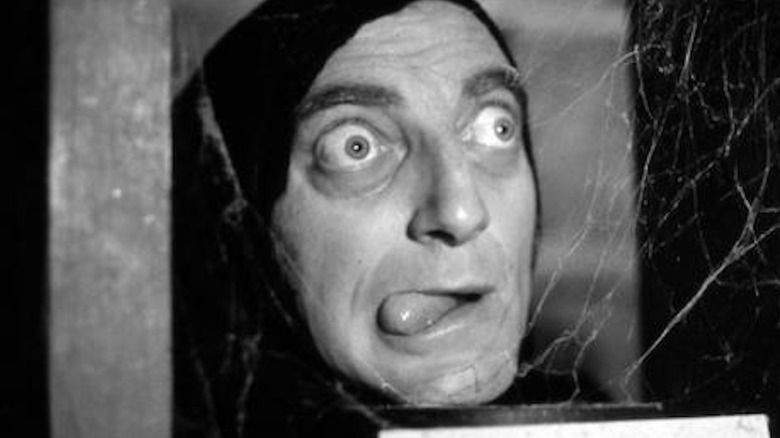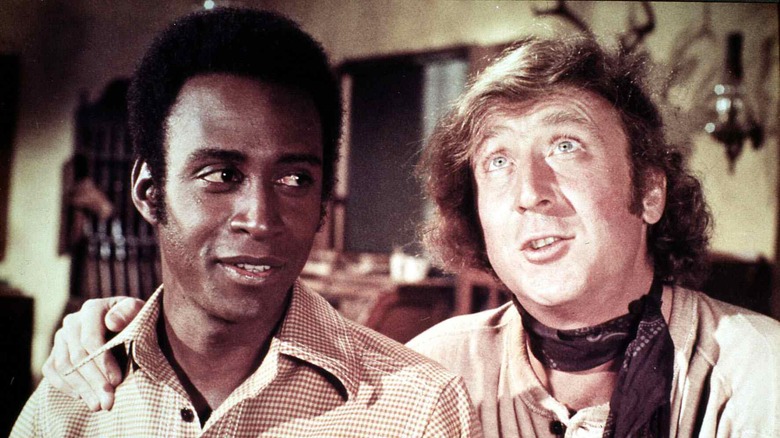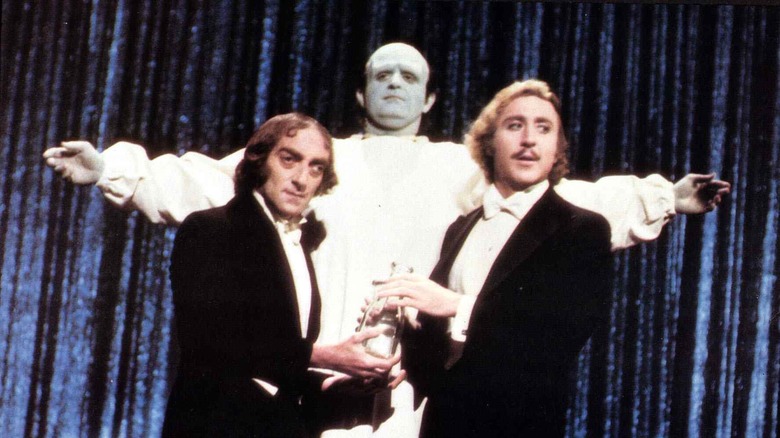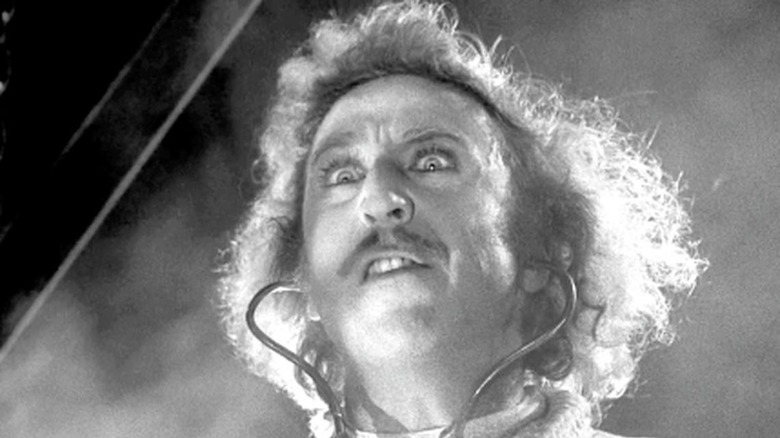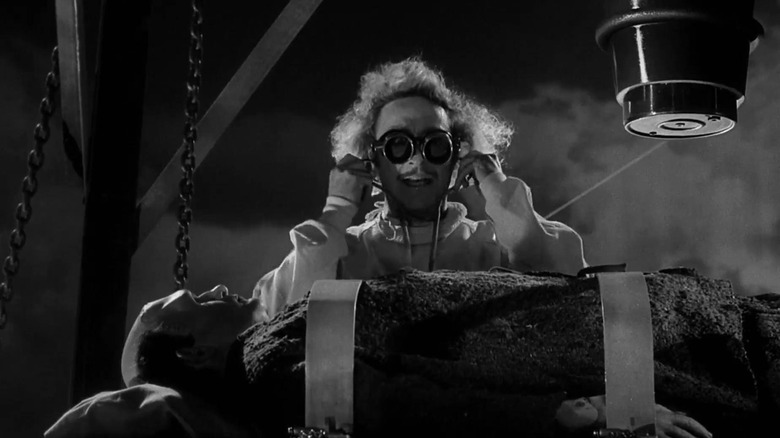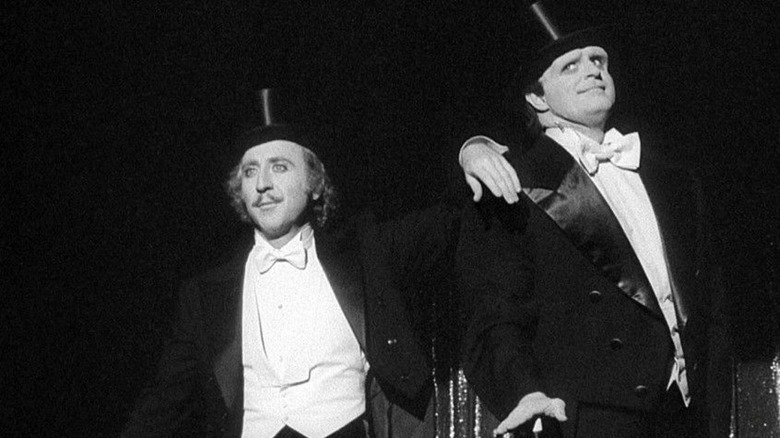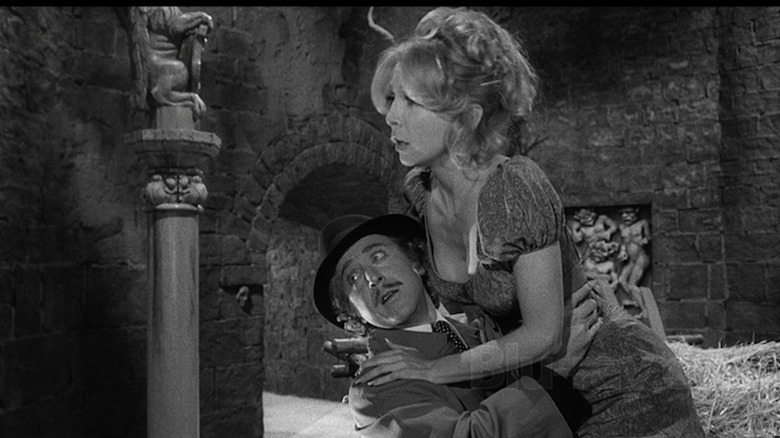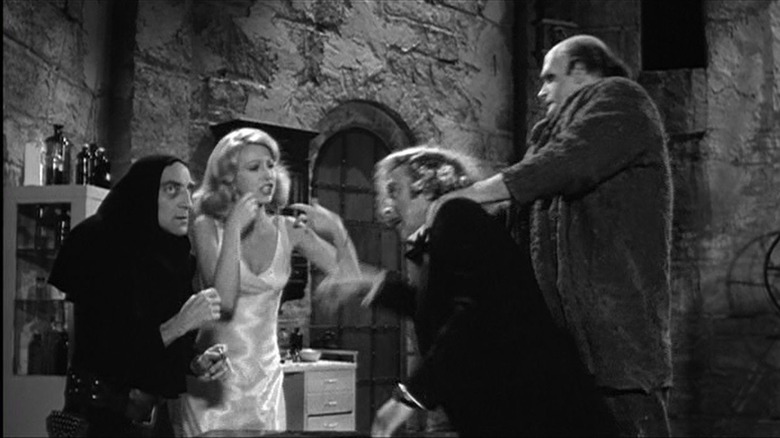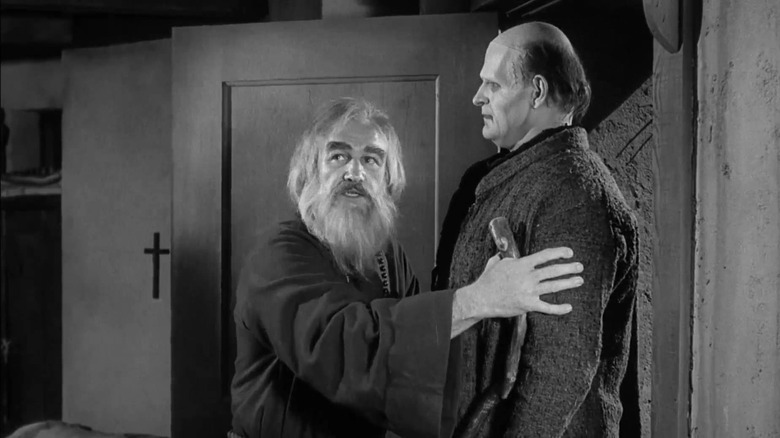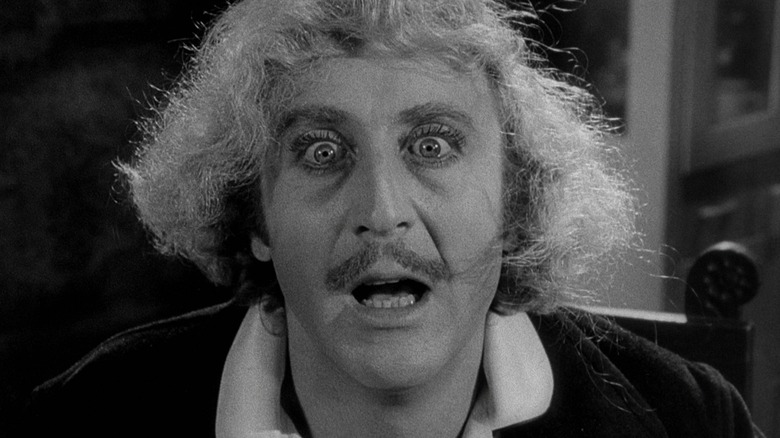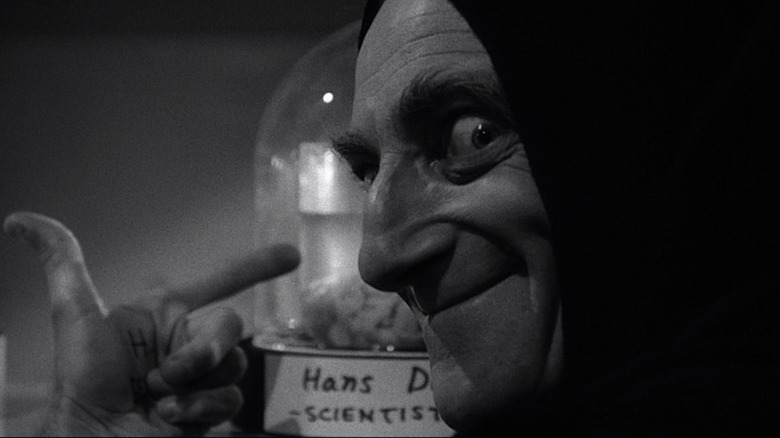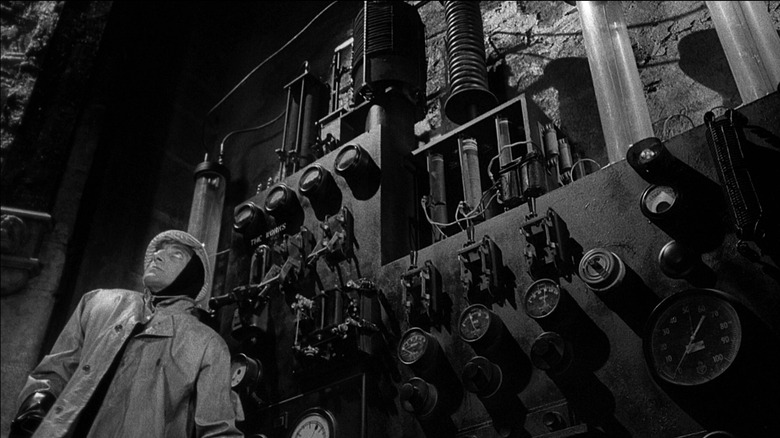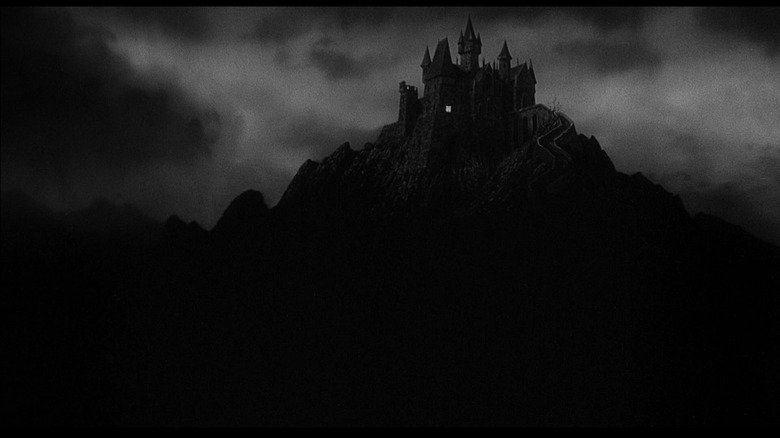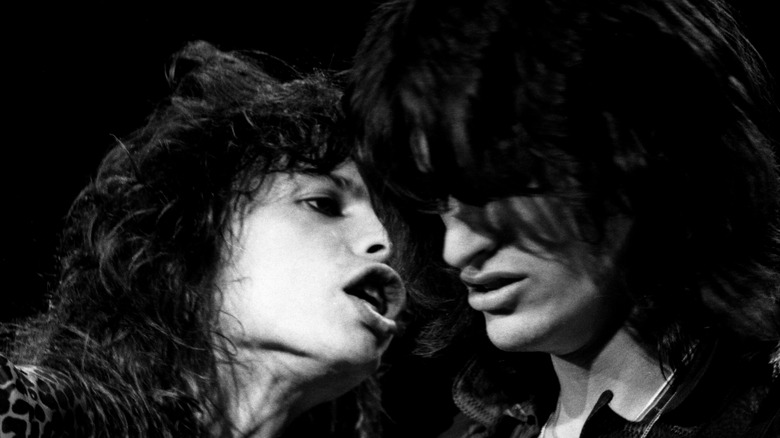The Untold Truth Of Young Frankenstein
"Young Frankenstein" is a very funny movie. You won't find many people willing to argue with that. Director Mel Brooks' story of Gene Wilder as ordinary doctor Frederick Frankenstein, who reluctantly takes up the family business after inheriting the ancestral castle in Transylvania, was just one of an explosion of rapid-fire spoof comedies that emerged in the '70s and '80s — "Airplane!" "The Naked Gun," "Monty Python and the Holy Grail," Brooks' own "Blazing Saddles" and "Spaceballs," plus dozens of others that have been long since forgotten.
But humor isn't all that makes a comedy. Even with the breakneck pace Brooks and his contemporaries ran at, you can't keep an audience laughing all the time, and you need a little something extra to keep them invested. That's what sets "Young Frankenstein" apart. First, there's the extraordinary love and care that went into recreating the look of those beloved old monster movies. And instead of the free-for-all of most spoof comedies, there's a strong story of Frederick fighting and finally embracing his heritage to connect all the gags. "We're making a riotous comedy here," Brooks said, "but it's got to be very sweet and sad, and at times very scary. And it's got to be very real."
Just like the process that brought the creature to life, "Young Frankenstein" was lightning in a bottle, some of the funniest minds that ever lived working at the peak of their abilities to give their creation life. Here's how they did it.
Young Frankenstein began with two words scribbled on a notepad
"Young Frankenstein" was part of a very big year for both director Mel Brooks and star Gene Wilder, who released it just a few months after "Blazing Saddles," one of the biggest hits of either man's careers. And if it weren't for the one, the other might have never existed.
Mel Brooks recalls in "'Young Frankenstein': The Story of the Making of the Film," "There we were, in this Western town somewhere in the Antelope Valley in California ... Gene ... had a yellow legal pad and he was writing and writing. I looked at the top of the legal pad and it said 'Young Frankenstein.' I said to Gene, 'What the hell is that?'"
It was an idea Wilder had been toying with ever since appearing in "Everything You Always Wanted to Know About Sex* (*But Were Afraid to Ask)" two years earlier. It all started with those two words, which Wilder says got his imagination working so furiously on what he'd do in young Frederick Frankenstein's shoes that he filled up two pages with the Transylvania Station sequence, almost exactly as it would eventually appear on film.
Wilder knew only one director who could bring this vision to life, and he told Brooks so on the "Blazing Saddles" set. But Brooks was a professional, and he needed to negotiate his fee first. "You got any money on you?" he asked. Wilder replied that he had 57 dollars. "I'll take it as a down payment," Brooks responded.
The cast came together because they shared an agent
"Young Frankenstein" assembled one of the funniest casts in movie history, anchored by the central trio of Gene Wilder as Frederick, Peter Boyle as the Monster, and Marty Feldman as Igor. They all came from wildly different backgrounds — Wilder as Brooks' collaborator on "The Producers" and star of "Willy Wonka and the Chocolate Factory"; Boyle in the blood-drenched satire "Joe" and a memorable supporting role in "Taxi Driver"; and Feldman as the host of a British sketch comedy series.
You'd imagine it would take some kind of comic genius to think of bringing these three stars together, but the truth is much more prosaic. Brooks' book quotes Wilder's story of how the team was assembled. One day, he received a call from his agent Mike Medavoy asking if he had a project where he could work with Feldman and Boyle. "What made you think of that combination?" Wilder asked.
"Because I now handle you, Peter, and Marty."
"What an artistic basis," Wilder shot back. Artistic or not, that phone call set the wheels in motion for one of the great comedy teams of all time. "It was kismet," said Medavoy, "as so many things are."
Mel Brooks tried to trick the studio into making Young Frankenstein in black and white
Comedy tends to be one of the least visually inventive movie genres. As long as all the jokes are on the screen where you can see them, filmmakers tend not to fret too much over making it look good.
That's part of what makes "Young Frankenstein" so special. Mel Brooks deeply loved the classic Universal horror movies ever since the original terrified him as a child. His mother had to calmly explain that the Monster couldn't climb into his window because he'd have to take a train to Odessa to get a boat to the States — and even if he somehow got to New York and found their apartment building, he'd probably get the downstairs neighbor first.
So Brooks made "Young Frankenstein" as a tribute to the classics of the '30s, just as beautifully crafted as any of them — and better than some — with all the iris outs, soft focus, and heavy shadows that were their trademarks.
That was no small task. By 1974, black and white filmmaking had finally completed its long, slow death, and Brooks knew that his bosses at Columbia would worry that reviving the medium would scare away audiences. So, at least as he tells it, he tried to sneak that part by the suits at his pitch meeting: "On the way out, I shouted, 'Oh, by the way, we're going to make it in black and white.' Then we shut the door."
The studio tried to trick Brooks into making Young Frankenstein in color
Brooks' attempt to smuggle in his black and white vision didn't work. As soon as he left the pitch meeting, he says, "They were screaming, 'No, no, wait, come back! No black and white! Peru just got color!"
The producers at Columbia may not have wanted to lag behind Peru, but Brooks was adamant. That meant his bosses had to get just as sneaky as him to get the movie made their way. They offered Brooks a compromise. He could still make his black and white movie just as long as he shot it on color film and desaturated it after the fact. Brooks, of course, knew there was no way the producers would let him get to that last step, so he refused.
Brooks won the battle on "Young Frankenstein" by moving across town to Fox. But he'd eventually have to admit defeat. A few years later, he'd make "Silent Movie," an equally exacting tribute to the slapstick comedies of the silent era. He put just as much effort into recreating the style of the '20s as he had for the style of the '30s in "Young Frankenstein," with one major difference — all the sound-free antics played out in incongruous color.
Two of the most iconic scenes barely made it in
Even 50 years later, the average "Young Frankenstein" fan can reel off dozens of quotes from the movie off the top of their head. It's possible such a jam-packed film could afford to lose two of its most quotable moments — but the world as a whole would be much poorer for it.
First, there's the classic bit where Igor tells "Froderick" to "walk this way," then explains he means for him to imitate his own hunched-over walk. That wasn't in the script — Feldman just threw it in to amuse the crew and was horrified when Brooks said he wanted it in the movie. "You can't," the actor protested, "It's an old joke." Maybe so, but now it's impossible to think of it coming from anywhere but "Young Frankenstein."
And then there's the even more unforgettable scene where Frederick demonstrates his creation to the world by dressing him up in a tux and having him sing (or "sing") "Puttin' on the Ritz." Wilder knew it would kill, but Brooks was intimately concerned with the fine line between funny and silly, and he was sure this scene was on the wrong side.
Finally, Brooks agreed to film the song-and-dance and see what the audience thought. They ate it up — and they still do, half a lifetime later.
Teri Garr picked up her accent from Cher's hairdresser
Beyond the lead trio, "Young Frankenstein" has a deep bench of masterful supporting players, led by Teri Garr as Frederick's lab assistant Inga. Half the reason her performance is so hilarious is her ludicrous accent, which she picked up in an appropriately colorful way.
Garr originally auditioned to play Frederick's fiancee Elizabeth. Brooks was impressed, but he had his heart set on "Blazing Saddles" star Madeline Kahn, so he made Garr a deal to come back the next day and read for Inga. "A German accent in 24 hours," Garr recalled.
Fortunately, her gig on "The Sonny and Cher Comedy Hour" had introduced her to Cher's German hairstylist Renata, and after an afternoon's conversation, Garr was confident she had almost everything she needed to bring Inga to life. "There was one last thing I needed for Inga. Or two, to be exact. When I read the part, I realized it was really all about boobs, and I was not about to let my lack of them hinder my performance. The next day I went in ... wearing a fuzzy pink sweater and a huge bra stuffed with socks."
The charades scene almost killed Gene Wilder
When Frederick Frankenstein finally brings his creation to life, it wakes up mad and tries to strangle him. Anyone who's seen "Young Frankenstein" won't need much summary to remember the classic bit that follows. Frederick tries to tell Igor and Inga to give the monster a sedative (which Inga has been holding the whole time), but since the Monster has him muted, he resorts to a game of charades to get the point across. "Sedagive?"
Wilder and Boyle had to tread a fine line between playing the scene violent enough to look real onscreen, but not enough to actually injure Wilder. Boyle was keenly aware of the danger: "I'm afraid, I'm afraid," he said. "Gene keeps moving and my arms are around his neck." Brooks brushed off his concerns: "If Gene dies, he dies." Gene's response? "Hey, wait a minute?"
Fortunately, Wilder survived the scene, and so did his relationship with Brooks since he recognized the director was only joking. Probably.
That soup really was that hot
It's easy to assume anything potentially dangerous in a movie is a special effect. That's especially true for this one, which deliberately used the same obvious fakery as the Depression-era originals. There's some exceptions, though, which meant the cast had to take safety precautions in some unexpected places.
When "Young Frankenstein" premiered, its biggest star was Gene Hackman, fresh off classic hits like "Bonnie and Clyde," "The Conversation" and his Oscar-winning blockbuster, "The French Connection." He also had the smallest role, appearing for just one sequence as a parody of the blind monk from "Bride of Frankenstein." But he makes the most of it, unwittingly tormenting the poor monster by accidentally lighting his thumb instead of a cigar, breaking his wine glass, and showing remarkably poor aim when he pours his new friend some steaming hot soup.
Apparently, that steam was for real — Brooks' book mentions Hackman wore a protective rubber apron under his monks' habit. It also pointedly fails to mention any protection for poor Peter Boyle, who may have lived up to his name when he got the soup ladled straight onto his crotch.
Mel Brooks insisted the camera tracks be as rickety as the originals
Authenticity was essential to the retro style of "Young Frankenstein," which meant a lot of things that would be considered mistakes in another movie were left in. It also meant there were some arguments among the crew, who weren't all on the same page. Cinematographer Gerald Hirschfield did his best to make "Young Frankenstein" look like it had been waiting for audiences ever since Boris Karloff's heyday, but Brooks admitted that the two of them got in "one fight."
Hirschfield had just finished a tracking shot onto Garr and Wilder's faces, and he wanted to do it over again because the camera visibly wobbled as it moved. But Brooks insisted on printing the scene just as it was: "It mimicked exactly the equipment [original 'Frankenstein' director] James Whale had. He didn't have big rubber wheels. He didn't have plywood on the floor. He had a studio floor that was bumpy and crazy, and it gave it that 1931 quality I was dying to get in the film." Hirschfield acquiesced, and the wobble stayed.
The crew almost ruined the movie by laughing too hard
Working on a movie as hilarious as "Young Frankenstein" might sound like a lot of fun, but for that exact reason, it posed a serious challenge to Brooks' crew. The camera operator ruined enough takes — by laughing so hard that he shook the camera — that Brooks had to threaten him with dismissal to get him to keep himself together.
The rest of the crew didn't have it any easier, which ended up leading to some pretty creative solutions. To keep any and all backstage laughter off the soundtrack, Brooks went out and bought a thousand white handkerchiefs to hand out to the crew. "If you feel like laughing," he told them, "stick this in your mouth." Later, he added, "I turned around once in a while in the middle of shooting a scene and saw a sea of white handkerchiefs in everybody's mouths. I said to myself, 'We've got a big hit here.'"
Some of the actors still got caught busting up on camera, so editor John Howard relied heavily on close-ups to keep them out of frame.
The original Frankenstein props turned up from the designer's garage
If you want authenticity, you can't get any more authentic than using the original props from Frankenstein's lab, and that's exactly what Mel Brooks did.
Production manager Frank Bauer made what producer Michael Gruskoff called "an astounding discovery." Not only was he able to track down Kenneth Strickfaden, the man behind the "Frankenstein" series' iconic collection of sparking and buzzing pseudoscientific devices, but Strickfaden still had the original props sitting in his garage.
The old veteran was so happy to tinker with his creations again after nearly 40 years that he only charged $1,000 for the studio to rent his classic equipment. But Bauer said, "That was too low, even for us," and raised the fee to $25,000.
It was the least they could do for this unsung Hollywood legend — outside his work on the "Frankenstein" series, Strickfaden was also one of the first movie sound engineers, and he had a flair for drama with his science fiction gizmos, giving them names like the Baritron Generator, Megavolt Senior, Neutron Analyzer, and Cosmic Ray Diffuser.
Young Frankenstein inspired one of the first viral videos on YouTube
Even if you've never seen "Young Frankenstein," odds are you've picked up bits and pieces of it in conversation. You may have even referenced it yourself without knowing it.
That's almost certainly the case if you were online circa 2007. Just two years after YouTube launched, it was mostly a place for regular folks to share short, silly videos. But it was already beginning to show its potential to set the course of pop culture, and one of its biggest early successes was "Dramatic Chipmunk."
It began with a Japanese pop star bringing a prairie dog on the talk show "Hello Morning." A YouTube user known only as "magnets99" saw a face of dawning revelation on the critter as it suddenly turned its head. Juxtapose that with some appropriately dramatic music, and you have 30 million views — and that's not even accounting for all the other users that have uploaded magnets99's creation (and turned the prairie dog into a chipmunk in the process).
But a lot of stars have to align for a video to go viral. Who knows if "Dramatic Chipmunk" could have ever taken off without just the right note of over-the-top shock? It's certainly hard to imagine a better source than John Morris' score for "Young Frankenstein." Next time you pop the movie on, keep an ear out for the chipmunk's favorite tune as Frederick arrives at his ancestral castle.
Young Frankenstein inspired one of Aerosmith's biggest hits
The vanguard of the hair metal subgenre, Aerosmith was responsible for some of the biggest hits of the '70s and '80s. One of their biggest was "Walk This Way," with Joe Perry's chugging guitar and Steven Tyler's squealing vocals perfectly calculated to appeal to everyone's inner meathead. It even had enough juice to come around a second time over a decade later when Aerosmith teamed up with pioneering rap trio Run-DMC for an even more successful new version on the hip hop group's 1986 album "Raising Hell." It was a mutually beneficial arrangement, revitalizing the rock veterans' career and introducing rap to a whole new audience in the medium's early days.
"Young Frankenstein" fans might giggle at the song's resemblance to Frederick and Igor's classic gag, but as it turns out, that's exactly what Aerosmith was going for. Perry told The Wall Street Journal that one night during the sessions for the band's "Toys in the Attic" album, the boys went to see Mel Brooks' classic and, like most viewers, walked out of the theater quoting the best bits to each other, including Marty Feldman's "Walk this way." "Wait," said producer Jack Douglas, "'Walk this way' might be a great title for the song." If the chart success of the eventual single is anything to go by, he knew what he was talking about. But just imagine if they'd decided to cover "Puttin' on the Ritz" instead.
